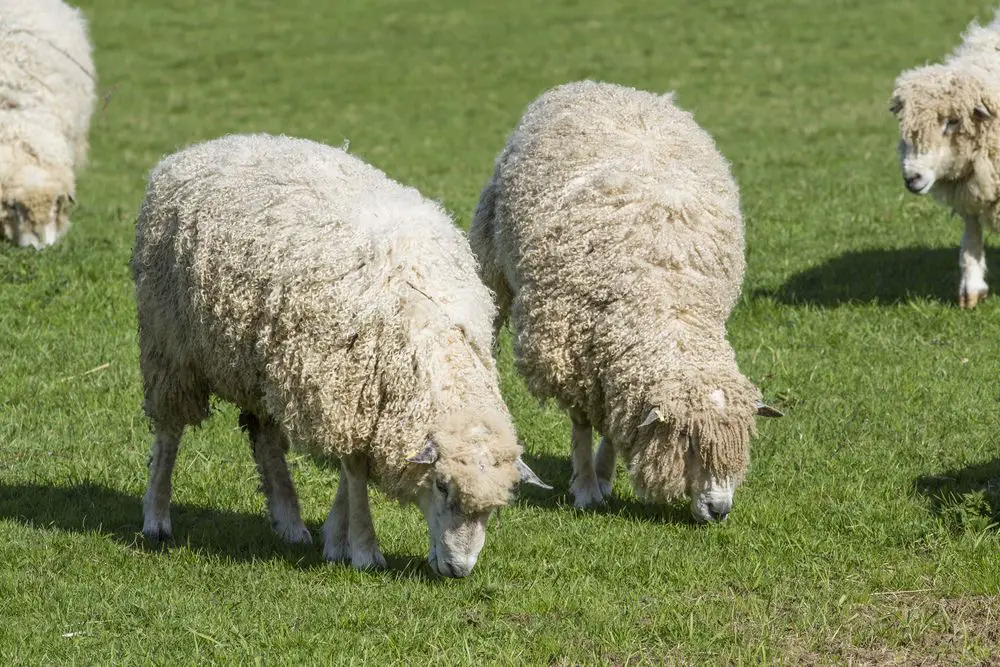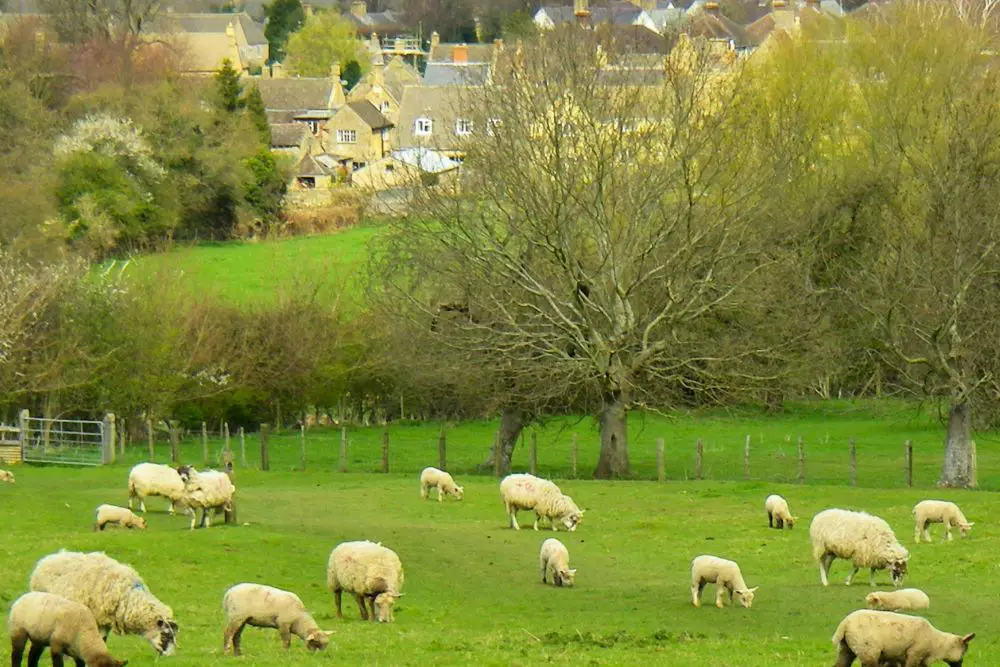Cotswold sheep are one of the oldest sheep breeds, originating in Gloucestershire, England. Despite their historical significance and longevity, they are a rare breed today but are known for their unique fleece which is long, curly, and lustrous.
The Cotswold breed was named after the wolds and cotes which acted as their shelter during inclement weather.
This article will cover the history of this longwool breed, and discuss the characteristics of their wool which makes this breed worthy of your consideration as a sheep breed to raise on your farm.
Table of Contents
Where do Cotswold Sheep Come From?
Cotswold sheep were first seen around the time of the Roman Conquest and are believed to have been crossbred with white sheep in England to produce the Cotswold sheep of today.
During the Middle Ages, Cotswold wool fetched an incredibly high price for England and was traded as a major export, being used for everything from clothing to household goods.
The modern Cotswold sheep as we know it began as an experiment in the late 1700s when Leicester rams were introduced to the existing Cotswold herd. Through effective crossbreeding, they were able to minimize the overall size of the sheep while improving the carcass and meat quality.
Cotswold breeders later changed this tactic in the early 1800s and began choosing sheep with a larger body type which produced more wool.
Cotswold’s were brought to Albany, New York for the first time by Christopher Dunn in 1832, and this breed became the most popular wool breed in America for many years. In 1878, the American Cotswold Record Association was established and by 1914 there were 250 million Cotswold sheep registered.
They dominated the scene until Merino sheep came to America, and displaced them due to the fine quality of the Merino fleece.
By the early 1990’s, there were only a few hundred Cotswold sheep registered worldwide and they were placed on a watchlist by the rare breeds survival trust and several other conservancy groups.
What are the Characteristics of the Cotswold Sheep?
The Cotswold sheep has a white face, and is a large, polled breed that comes in both white and black Cotswold varieties. The black Cotswold is by far more rare than the white.

| Characteristics | Description |
| Origin | Britain |
| Appearance | Cotswold sheep have a distinctive forelock on their head that is around 12 inches in length which is absent in other breeds. This longwool sheep is known for having a friendly temperament. |
| Wool | Coarse, heavy fleece with high yields. Micron range from 33 to 40. USDA wool grade between 36’s to 46’s with a staple length between 12 and 15 inches. Grease fleece weight of 12 to 15 pounds with a yield at 60%. |
| Weight | The Cotswold ram weighs between 250lbs and 290lbs, while an ewe weighs between 190lbs and 220lbs. |
| Fertility | Excellent mothering abilities. |
| Meat | Mild tasting |
| Environment | Survives best in climates with a lot of rain |
| Common Uses | Wool production predominantly |
What Kind of Fleece Does the Cotswold Produce?
This breed of domestic sheep produces coarse, heavy fleece that is well known for having high yields.
Their fleece hangs in locks unlike most other breeds. This unique quality has revived interest in their wool over the past two decades, driven mostly by demand from crafters and artisans, which is helping to revive this breed. In fact, 2023 will see the first ever Cotswold Wool Weekend (yarn festival) be held in England.
Cotswold wool also takes on dye colors well and has been called “the poor man’s mohair” for how luxurious it feels.
Why Should You Raise Cotswold Sheep?
There are many reasons you may want to consider raising Cotswold sheep on your farm:
- Easy to raise due to docile nature
- Have mild tasting meat
- Produce long, plentiful and lustrous wool
- Cotswold wool is more in demand now than in the past 100 years and fetches a high price
- Cotswold sheep are excellent foragers
- Can accept coarse feed
- Can survive in climates with a lot of rain
- Ewes are excellent mothers and accepting of lambs
- As a rare breed, there is an opportunity for directing their continued evolution

